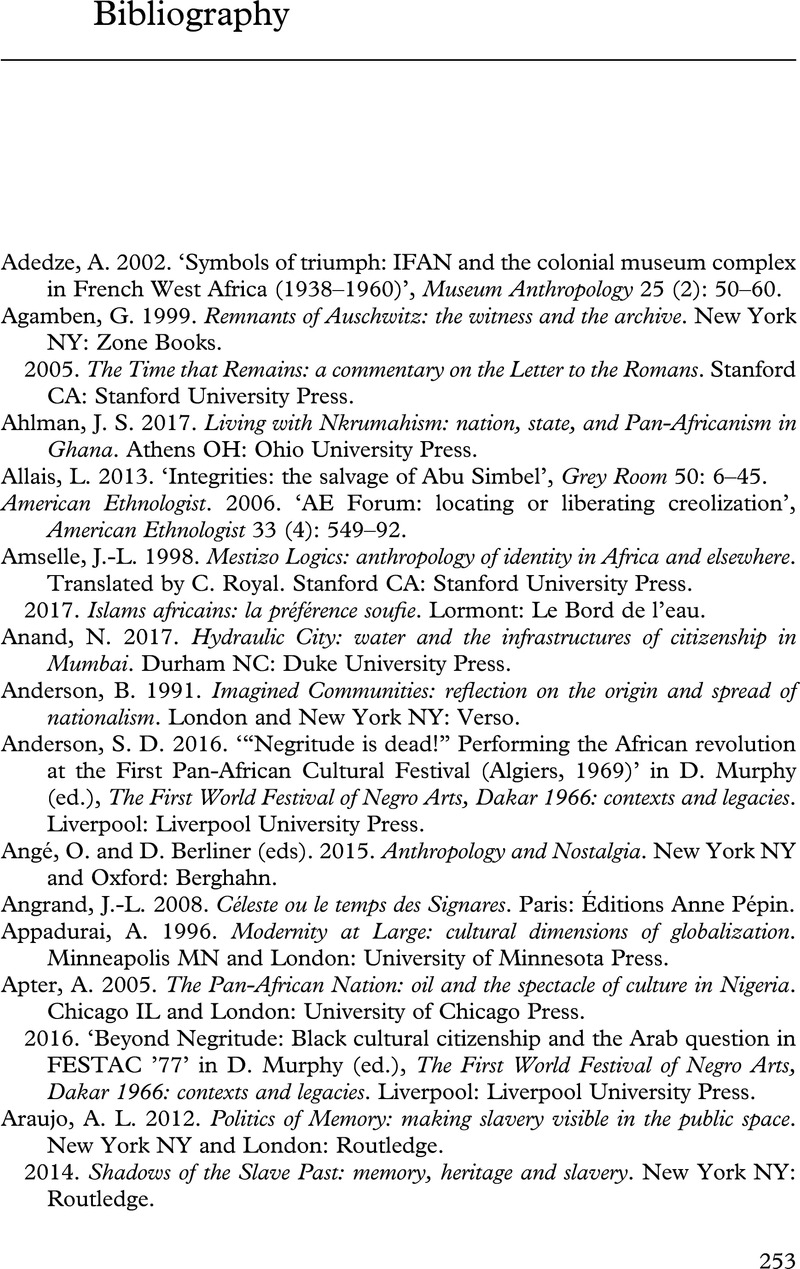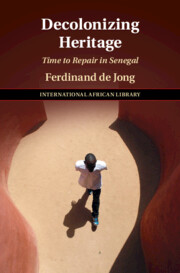Book contents
- Decolonizing Heritage
- The International African Library
- Decolonizing Heritage
- Copyright page
- Dedication
- Contents
- Figures
- Acknowledgements
- Prologue
- Introduction
- 1 History and Testimony at the House of Slaves
- 2 The Door of Return
- 3 Shining Lights and Their Shadows
- 4 Prayer of Emergency
- 5 Recycling Recognition
- 6 Ruins of Utopia
- 7 The Museum of Black Civilizations
- Coda
- Bibliography
- Index
- The International African Library
- References
Bibliography
Published online by Cambridge University Press: 10 March 2022
- Decolonizing Heritage
- The International African Library
- Decolonizing Heritage
- Copyright page
- Dedication
- Contents
- Figures
- Acknowledgements
- Prologue
- Introduction
- 1 History and Testimony at the House of Slaves
- 2 The Door of Return
- 3 Shining Lights and Their Shadows
- 4 Prayer of Emergency
- 5 Recycling Recognition
- 6 Ruins of Utopia
- 7 The Museum of Black Civilizations
- Coda
- Bibliography
- Index
- The International African Library
- References
Summary

- Type
- Chapter
- Information
- Decolonizing HeritageTime to Repair in Senegal, pp. 253 - 280Publisher: Cambridge University PressPrint publication year: 2022



